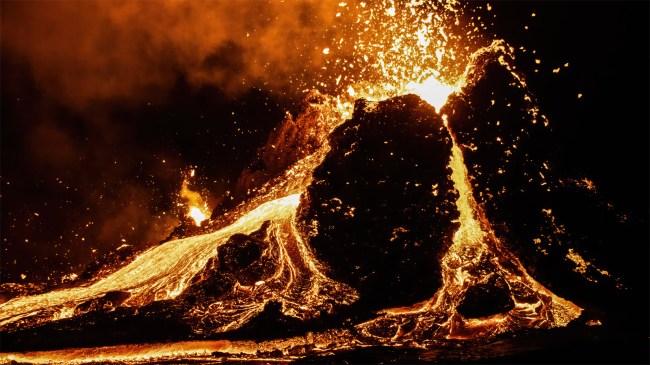iStockphoto
Axial Seamount, a mile-wide underwater volcano off the coast of Oregon, is showing signs of an imminent eruption. The volcano, located around 300 miles from Portland, Oregon, last erupted in 2015.
The Axial Seamount is nearly one mile underwater on the Juan de Fuca Ridge, an area where two massive tectonic plates (the Pacific and the Juan de Fuca plates) are constantly spreading apart, according to CNN.
“It’s pretty unusual,” said William Wilcock, a marine geophysicist and professor at the University of Washington School of Oceanography. “It’s a genuine hotspot, and the volcano itself is quite large, rising about 3600 feet above the seafloor. The summit, bisected by the Juan de Fuca Ridge, is marked by a large caldera [a type of crater formed by volcanic eruptions], where the magma chamber has collapsed during multiple eruptions. That combination of features, located right on top of a mid-ocean ridge, is not very common.”
Scientists studying the volcano have reported hundreds of earthquakes at the site each day over the past several weeks. Bill Chadwick, a volcanologist and research professor at Oregon State University, as well as colleagues from the University of Washington and the University of North Carolina Wilmington, have also reported that the volcano has been steadily swelling, another sign of an imminent eruption.
Chadwick says there shouldn’t be any threat to humans when the Axial Seamount volcano does erupt. “There’s no explosion or anything, so it would really have no impact on people. Even if you were out on a boat right over the seamount when it’s erupting, you probably would never know it,” he said.
The same can’t be said for plants and animals living on the Axial Seamount’s hydrothermal vents. In the past, Axial erupted in 1997 and 2011, they were decimated by the lava flows. The good news, according to Debbie Kelley, director of the Regional Cabled Array, is that their ecosystem recovered and was flourishing again just three months later.
“I think it’s one of the biggest discoveries we’ve made,” said Kelley, a professor of marine geology and geophysics at the University of Washington, in a statement. “Life thrives in these inhospitable environments, and volcanoes are probably one of the major sources of life in our oceans.”
Content shared from brobible.com.

